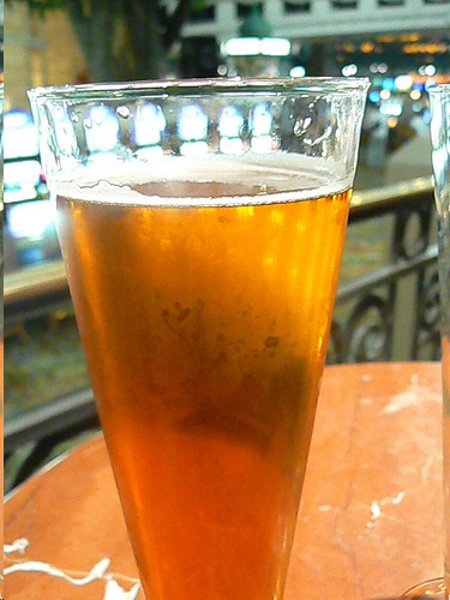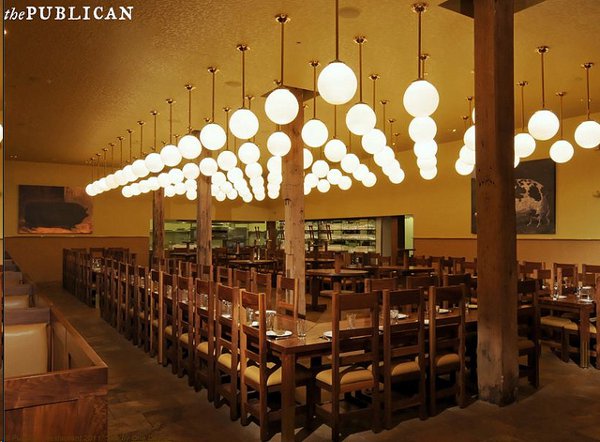Beer...The New Sophisticated Spirit

A hearty glass of red wine with a juicy steak or a crisp glass of white with a delicate fish are two pairings that may never go out of style.
But beer has made its mark on the food scene as a fantastic beverage to pair with meals and cheese -- and even in recipes, like bread, stews, and desserts. (Guinness milk chocolate ice cream, anyone?)
Over the last decade or so, America has seen a beer renaissance. Not just with food, of course, but as a delightful entity all on its own. More Americans are realizing there’s more to life than just a can of Budweiser. The trend is catching on even at baseball games, with stadiums serving up locally crafted brews.
A Locally Handcrafted Microbrew, Please
This is due largely to the expansion of microbreweries in the past ten years. Craft brewing has risen from 1 percent of the beer market to almost 6 percent in 2011, according to the Brewers Association. Overall, 2011 saw a 13 percent rise in volume of craft beer and 15 percent in dollars, they reported.
The Brewers Association also reports that 1,252 breweries are in planning right now.
At the same time, the Huffington Post recently reported that big brand beers like Anheuser-Busch have been suffering drops in the market. According to the report, there are 1,989 craft breweries in the U.S. as of May.
Worldwide Trend
To some people, beer may seem, well, less “classy” than wine.
Gregg Berman, owner of Clown Shoes Brewery, started out owning a wine distribution company. Then he started Clown Shoes, a Boston-based brewery based on a co-worker’s nickname, about three years ago.
Though he still works and has a family background in wine, Berman said he never had a passion for it. But he became interested in trying different beers and has continued the journey. The brewery now has 18 uniquely named beers, including Hoppy Feet, Tramp Stamp, and Lubrication, which is an American Black Ale. The brewery has not yet released a simple lager, since they take a lot longer to ferment, he said.
“We don’t take ourselves all that seriously, but the beer we take really seriously.”
The names and labels have garnered attention, both good and bad.

“I think that some people see it and think it’s cool and interesting,” Berman said. “Others figure it’s all marketing and it just doesn’t appeal to them. It’s a double-edged sword. We care a lot more ultimately about what goes into the bottle than what’s in the label.”
With most of his early career spent focused on wine, Berman thinks beer certainly is reaching a new level, he added.
“Beer is becoming viewed in a much more positive light and sophisticated way,” he said.
For wine drinkers looking to venture into beer, Berman suggests trying Belgian beer, since they have a similar ABV (Alcohol By Volume) to wine and offer some sweetness.
Belgian varieties also present a similar level of sophistication, though Berman actually thinks America is making “the most vital, interesting and best beers in the world right now.”
Some consumers are seeking local brews, while others prefer a certain style, and more are becoming familiar with Belgians and Belgian-style beer. Then, there are those who just appreciate a cool label.
Though some people aren’t very willing to venture out of their American comfort zone, those who do will find a wider variety of styles.
For the more experienced beer drinkers, sours can bring quite an experience to the palate. Inexperienced beer drinkers are often turned off by the label “sours,” but the beers are often quite refreshing when brewed right. And the style takes some getting used to -- a real adventure for those new to it.
Beer has been around since the ancient Egyptians drank it. It continues to expand and diversify throughout America, as it’s no longer as simple as Homer Simpson’s can, plainly labelled “BEER.”

Enter Restaurants
In addition to serving a well-rounded wine menu, many restaurants are now giving beer the same treatment.
The Spotted Pig in New York City’s West Village, for example, provides local beers alongside award-winning seasonal British and Italian fare. Their offerings include British-style cask-conditioned ales, served from an old-timey looking machine in the back.
At Chicago’s popular gastropub, the Publican, Michael McAvena has been beer director since it opened about four and a half years ago.
The Publican serves 12 drafts and a housemade lambic, an unusual brew with a unique sour tinge.
“Drafts change twice a week -- mandatory,” McAvena said. They often change up to four times a week, he added.
The Publican holds monthly tastings and other events -- including an upcoming one at a local farm.
McAvena isn’t brushing aside wine, though. The restaurant serves all Northern European old-world wines, and McAvena says there’s a “cool natural wine movement” happening, even though wine itself may not be at its peak.
“I feel like there’s going to be a resurgence in wine later,” he said. “The wine world is going to wear a little bit and eventually come back.”
Beyond the Vine
If you’re new to beer, here are some tips for switching over from wine:
Instead of a Chardonnay, try a spicy white ale.
Instead of a Malbec, go for a brown ale.
Instead of a Pinot Noir, taste the hoppy notes of an India Pale Ale.
Forgo the Riesling for a delicious wheat beer.
Author Bio:
Beth Kaiserman is a contributing writer at Highbrow Magazine.
Photos: Iwona Erskin Kellie; Dirk Tussing; Tim Pearce (Flickr, Creative Commons).





























































































































































































































































































































